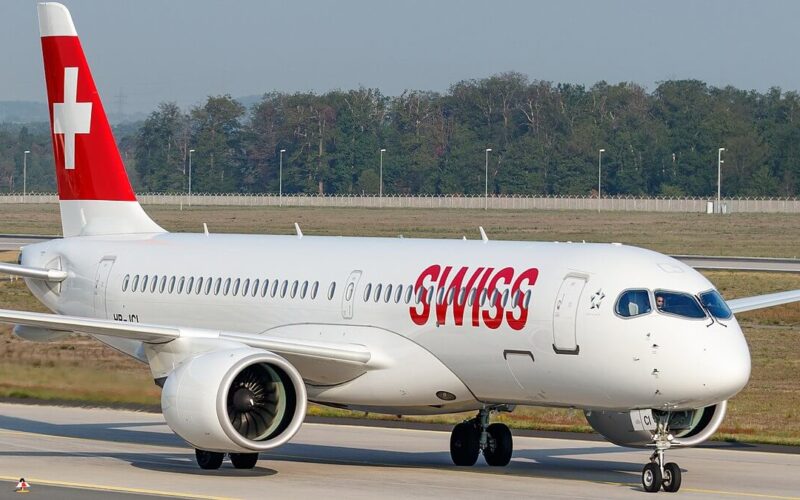Swiss International Air Lines grounded all of its Airbus A220s after a new engine incident affected one of its aircraft. Two similar occurrences were reported in the last six months. The fleet will undergo a complete inspection, forcing the airline to cancel some of its flights.
The fleet of nine A220-100s and 20 A220-300s (formerly Bombardier C-Series) that Swiss operates has been affected by recurring problems in the past months, prompting the company to take action. Twelve out of fifteen flights between London and Geneva were canceled.
Flight update: technical irregularities on various SWISS short-haul flights. If you are booked on any of the affected flights, please find more information here: https://t.co/tS0qbCIDcc
— Swiss Intl Air Lines (@FlySWISS) October 15, 2019
The latest incident dates back to October 15, 2019. The flight LX359 from London Heathrow Airport (LHR) to Geneva International Airport (GVA) was forced to make an emergency landing in Paris Charles de Gaulle Airport (CDG) after one of the A220 engines failed mid-flight.
On September 27, the left-hand engine (PW1524) of an A220-300, registered HB-JCA, had an uncontained failure during flight LX358 from Geneva to London, forcing the aircraft to be turned back.
On July 25, 2019, the Swiss flight with Airbus A220, registered HB-JCM, was en route from Geneva to London when the left engine suffered a mechanical failure as it was passing over the East of France. The flight crew shut down the engine and landed the diverted flight at Paris Charles de Gaulle airport.
Following the July and September incidents, the Bureau d’Enquêtes et d’Analyses pour la Sécurité de l’Aviation Civile (BEA), the French authority for civil aviation safety, was handed the investigation, with the assistance of the United States National Transportation Safety Board (NTSB).
Another probably unrelated problem involving a Swiss A220 was reported on September 26, 2019, on a flight from Geneva to London. After a technical problem was detected on an A220-100 about to take off, another similar aircraft was chartered. However, a malfunction alert of the flight control system appeared in the replacement plane, prompting it to turn back and land in its departing airport.

